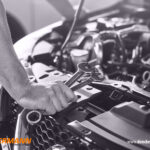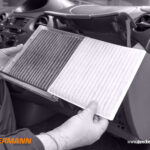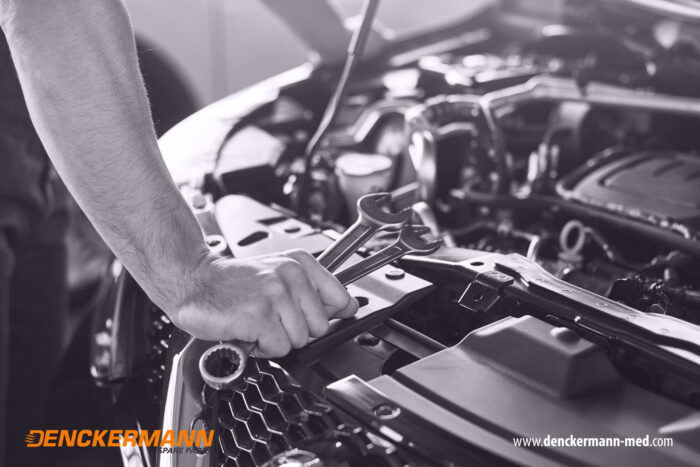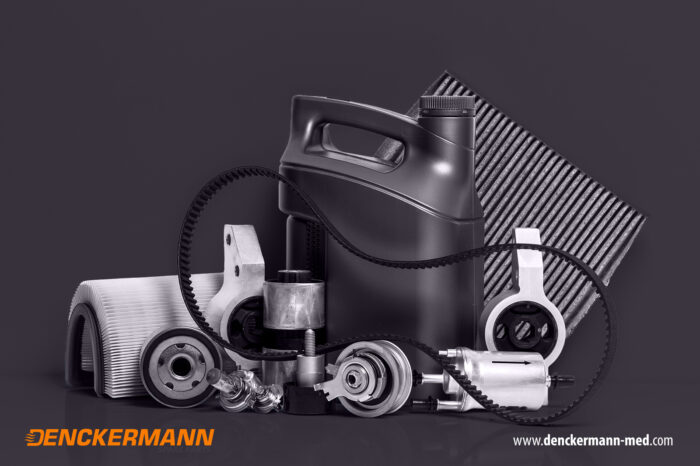Top 10 Essential Auto Parts Every Car Owner Should Know About
Cars are intricate machines that rely on a host of essential auto parts to function smoothly and safely. As a car owner, understanding these components not only enhances your ability to maintain your vehicle but also empowers you to make informed decisions about repairs and upgrades.
From the engine that powers your ride to the brakes that ensure your safety, knowing the top auto parts can save you time and money in the long run. In this article, we’ll explore the top 10 essential auto parts every car owner should know about. Whether you’re a seasoned gearhead or a novice driver, understanding these key components will help you navigate the world of automotive maintenance with confidence. Get ready to dive into an informative journey that will make you more connected with your vehicle and prepared for any challenges that come your way!
The Importance of Understanding Auto Parts
Understanding the various components that make up your car is crucial for any vehicle owner. Not only does this knowledge enhance your ability to perform basic maintenance tasks, but it also empowers you to make informed decisions about repairs and upgrades. When you understand how each part functions and its significance to the overall operation of your vehicle, you can better diagnose issues, communicate effectively with mechanics, and ensure that you are not overcharged for unnecessary repairs. This foundational knowledge can lead to significant savings in both time and money over the life of your car.
Moreover, familiarity with essential auto parts can significantly improve your driving experience. Knowing what to check and maintain can help you prevent breakdowns, improve fuel efficiency, and extend the lifespan of your vehicle. It also allows you to customize and optimize your car to suit your driving style and needs. Whether you are planning a long road trip or your daily commute, a well-maintained vehicle that you understand inside and out will always perform better and with fewer surprises.
Lastly, the confidence that comes with understanding your car’s components cannot be overstated. Many car owners feel intimidated by the complexity of their vehicles, leading to a sense of helplessness when something goes wrong. By demystifying these parts and systems, you gain the confidence to tackle minor issues yourself and the knowledge to engage with professional services more effectively. This article aims to equip you with the essential information to transform you from a passive car owner to an empowered and proactive one.
Engine Components: The Heart of Your Vehicle
The engine is often referred to as the heart of any vehicle, and for good reason. It’s the primary source of power that propels your car forward, making it one of the most critical components to understand. At its core, the engine converts fuel into mechanical energy through a series of controlled explosions within the combustion chamber. This energy then powers the pistons, which in turn rotate the crankshaft, ultimately driving the wheels of your car.
Several key parts within the engine merit attention. The cylinder block, often considered the engine’s backbone, houses the cylinders where combustion occurs. The cylinder head, affixed to the top of the block, contains the valves that control air and fuel intake and exhaust gas expulsion. The timing belt or chain ensures that these valves open and close in sync with the pistons, maintaining the precise timing necessary for efficient engine operation. Regular inspection and maintenance of these components can prevent engine failure and costly repairs.
Another vital component is the engine’s cooling system, which includes the radiator, water pump, and thermostat. This system ensures that the engine operates within an optimal temperature range, preventing overheating and subsequent damage. The lubrication system, comprising the oil pump and oil filter, is equally important, as it reduces friction and wear on moving parts. Understanding these systems allows you to perform routine checks and address issues before they escalate, ensuring the longevity and reliability of your engine.
Transmission Parts: Ensuring Smooth Gear Changes
The transmission is responsible for transferring power from the engine to the wheels, enabling the car to move at varying speeds. It adjusts the power output to ensure optimal engine performance, providing smooth gear changes and efficient acceleration. There are two main types of transmissions: manual and automatic, each with its own set of components and maintenance requirements.
In a manual transmission, the driver physically shifts gears using a clutch and gear stick. Key components include the clutch, flywheel, and synchronizers. The clutch engages and disengages the engine from the transmission, allowing the driver to change gears, while the flywheel helps maintain engine stability. Synchronizers help match the speed of the rotating gears, facilitating smooth transitions. Regular inspection of the clutch assembly and timely replacement of worn parts are crucial to maintaining a manual transmission’s performance.
Automatic transmissions, on the other hand, handle gear changes without driver input, relying on a complex assembly of hydraulic systems, sensors, and electronic controls. Key components include the torque converter, planetary gear set, and valve body. The torque converter replaces the clutch, allowing the engine to remain engaged while the car is stationary. The planetary gear set provides the various gear ratios, and the valve body directs hydraulic fluid to engage the appropriate gears. Automatic transmissions require regular fluid changes and occasional software updates to ensure optimal performance.
Brake System Essentials: Safety First
The brake system is arguably the most critical safety feature in any vehicle, allowing you to slow down or stop in response to road conditions and traffic. Understanding the components of your brake system is essential for maintaining your car’s safety and ensuring reliable performance. The two primary types of brake systems are disc brakes and drum brakes, each with distinct components and maintenance needs.
Disc brakes consist of a brake rotor attached to the wheel, a brake caliper, and brake pads. When you press the brake pedal, hydraulic fluid is sent to the caliper, causing it to squeeze the brake pads against the rotor. This friction slows down the wheel, bringing the car to a stop. Regular inspection of the brake pads and rotors is necessary, as worn pads can reduce braking efficiency and damage the rotors. Replacing brake pads before they are excessively worn can prevent costly repairs and ensure your brakes perform effectively.
Drum brakes, typically found on the rear wheels of some vehicles, use a brake drum, brake shoes, and a wheel cylinder. When the brake pedal is pressed, hydraulic fluid forces the wheel cylinder to push the brake shoes against the drum. This friction slows down the wheel. While drum brakes require less frequent maintenance than disc brakes, it is still important to inspect and replace the brake shoes regularly to maintain optimal performance.
The brake system also includes other critical components such as the master cylinder, brake lines, and brake fluid. The master cylinder converts the pressure from the brake pedal into hydraulic force, which is then transmitted through the brake lines to the calipers or wheel cylinders. Regularly checking the brake fluid level and ensuring there are no leaks in the brake lines are essential steps in maintaining your brake system’s reliability and safety.
Suspension and Steering: Maintaining Control
The suspension and steering systems work together to provide a smooth and controlled driving experience. They absorb shocks from the road, maintain tire contact with the surface, and ensure that you can precisely control your vehicle’s direction. Understanding these systems and their components can help you identify issues early and maintain optimal driving performance.
The suspension system includes several key components such as springs, shock absorbers, struts, and control arms. Springs support the vehicle’s weight and absorb road shocks, while shock absorbers dampen the oscillations caused by the springs, ensuring a smooth ride. Struts combine the functions of a shock absorber and a structural component, providing additional support to the suspension system. Control arms connect the suspension to the vehicle’s frame, allowing for controlled movement of the wheels. Regular inspection of these components and timely replacement of worn parts are essential for maintaining a comfortable and stable ride.
The steering system enables you to control the direction of your vehicle. In most modern cars, this is achieved through a rack-and-pinion setup, where the steering wheel is connected to a gear system that moves the wheels. Key components include the steering rack, tie rods, and power steering pump. The steering rack translates the rotational motion of the steering wheel into linear motion, moving the wheels left or right. Tie rods connect the steering rack to the wheels, ensuring precise control. The power steering pump provides hydraulic assistance, making it easier to turn the wheel. Regular maintenance of these components, including checking for leaks and ensuring proper fluid levels, is crucial for responsive and reliable steering.
In addition to these primary components, the suspension and steering systems include various bushings, ball joints, and bearings that contribute to overall stability and performance. Regular inspection and maintenance of these smaller parts can prevent larger issues and ensure that your vehicle remains safe and enjoyable to drive.
Electrical System Components: Powering Your Ride
The electrical system in your car is responsible for powering everything from the ignition to the lights and the entertainment system. It’s a complex network that includes the battery, alternator, starter motor, and various sensors and controllers that ensure everything runs smoothly. Understanding these components can help you diagnose and fix electrical issues, ensuring that your car remains reliable and functional.
The battery is the heart of the electrical system, providing the initial power needed to start the engine and run various electrical components when the engine is off. It stores electrical energy in chemical form and releases it as needed. Regularly checking the battery’s charge level and ensuring that the terminals are clean and free of corrosion can prevent starting issues and extend the battery’s life.
The alternator is responsible for generating electrical power once the engine is running, recharging the battery and powering the car’s electrical systems. It converts mechanical energy from the engine into electrical energy through a process called electromagnetic induction. Regularly inspecting the alternator and its connections can prevent charging issues and ensure that your car’s electrical systems remain functional.
The starter motor is a small, powerful electric motor that turns the engine over, allowing it to start. It draws power from the battery and uses a solenoid to engage the engine’s flywheel. If the starter motor fails, the engine won’t start, making it an essential component to keep in good working order. Regularly checking the starter motor and its connections can prevent starting issues and ensure that your car remains reliable.
Exhaust System Parts: Emissions and Performance
The exhaust system plays a crucial role in managing your vehicle’s emissions and optimizing its performance. It directs harmful gases away from the engine and out of the car, reduces noise, and can even improve fuel efficiency. Understanding the key components of the exhaust system can help you maintain your vehicle’s performance and comply with environmental regulations.
The exhaust manifold is the first component in the exhaust system, connected directly to the engine’s cylinders. It collects exhaust gases from the combustion process and directs them into the exhaust pipe. Regular inspection of the exhaust manifold is essential, as cracks or leaks can result in decreased engine performance and increased emissions.
The catalytic converter is one of the most critical components in the exhaust system, responsible for reducing harmful emissions. It uses a chemical reaction to convert pollutants such as carbon monoxide, nitrogen oxides, and hydrocarbons into less harmful substances like carbon dioxide and water vapor. Regular maintenance and replacement of the catalytic converter are essential for ensuring that your vehicle meets emission standards and runs efficiently.
The muffler and resonator work together to reduce the noise produced by the exhaust gases as they exit the vehicle. The muffler uses a series of chambers and baffles to dampen sound, while the resonator further smooths out the exhaust note. Regular inspection and maintenance of these components can prevent noise issues and ensure that your vehicle runs quietly and smoothly.
Tires and Wheels: The Foundation of Your Vehicle
Tires and wheels are literally where the rubber meets the road, providing the necessary contact between your vehicle and the driving surface. They play a crucial role in handling, braking, and overall safety. Understanding the different types of tires, proper maintenance, and the importance of wheels can help you ensure a safe and comfortable driving experience.
Tires come in various types, each designed for specific driving conditions and performance characteristics. All-season tires are versatile and suitable for most driving conditions, while winter tires provide better traction in snow and ice. Performance tires offer enhanced handling and grip for sporty driving, and off-road tires are designed for rugged terrain. Understanding the differences and choosing the right tires for your driving needs can significantly impact your vehicle’s performance and safety.
Regular tire maintenance is essential for ensuring optimal performance and longevity. This includes checking tire pressure, rotating tires, and inspecting for wear and damage. Proper tire pressure ensures even wear and improves fuel efficiency, while regular rotation helps distribute wear evenly across all tires. Inspecting for damage such as cuts, punctures, or bulges can prevent blowouts and other safety issues. By maintaining your tires, you can enhance your vehicle’s handling, braking, and overall safety.
Wheels, often overlooked, play a significant role in your vehicle’s performance and appearance. They come in various materials such as steel, aluminum, and alloy, each with its own set of advantages. Steel wheels are durable and affordable, while aluminum and alloy wheels are lighter and offer better performance and aesthetics. Regular inspection of wheels for damage and ensuring proper alignment and balance can prevent issues such as vibrations, uneven tire wear, and poor handling. By understanding and maintaining your wheels, you can ensure a smooth and safe driving experience.
Conclusion: Empowering Yourself as a Car Owner
Becoming knowledgeable about the essential auto parts of your vehicle is an empowering step for any car owner. It not only enhances your ability to maintain your car but also equips you with the confidence to handle minor repairs and make informed decisions about major ones. By understanding these components, from the engine to the wheels, you can ensure that your vehicle remains reliable, efficient, and safe.
Regular maintenance and timely replacement of worn parts are crucial for preventing breakdowns and extending the lifespan of your vehicle. By staying proactive and attentive to your car’s needs, you can avoid costly repairs and enjoy a smoother driving experience. Whether it’s checking the oil level, inspecting the brakes, or rotating the tires, these small actions can have a significant impact on your vehicle’s performance and longevity.
Ultimately, understanding your car’s essential parts fosters a deeper connection between you and your vehicle. It transforms you from a passive user to an engaged and informed owner, capable of taking control of your car’s health and performance. With this knowledge, you can navigate the world of automotive maintenance with confidence, ensuring that your vehicle remains a reliable and enjoyable companion on all your journeys.








